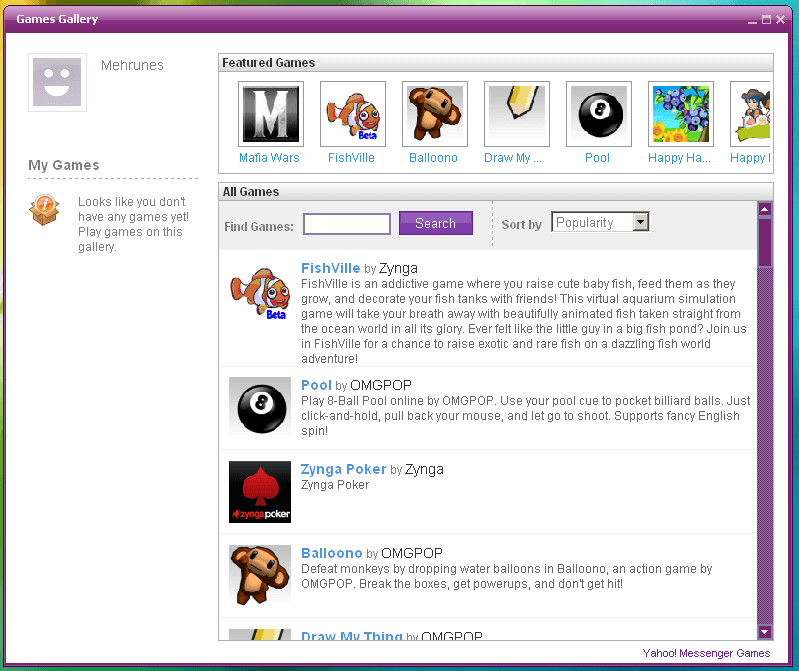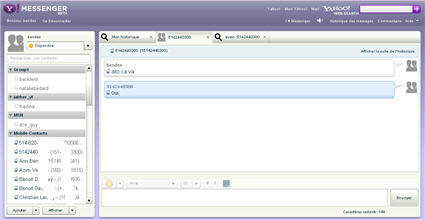

- #Yahoo messenger for website Offline
- #Yahoo messenger for website free
- #Yahoo messenger for website windows
The iPhone version was actually well-received. Unlike Flickr 1.0, the iPhone app was generally well-received, so why hasn't it become the most popular messaging app of the mobile era? Y!M had a Symbian version in 2006, a Blackberry version in 2007, and an iPhone version in 2009: after Facebook, but before Facebook Messenger or any of Yahoo!'s old competitors, and before WhatsApp became a messaging app. Starting with version 9.0, Messenger allowed embedding content from selected sites. More sites were added with further updates. Yahoo! Messenger 9.0 then saw the light, allowing embeds of content from YouTube and Flickr - then the largest image-sharing site on the internet. Less than a year later, that version was discontinued and removed from the site.
#Yahoo messenger for website windows
Later that year, Yahoo! Messenger for Vista was launched with a tabbed interface and a design consistent with the new Windows version. That year Y!M's number of users peaked at an estimated 94 million, second only to Windows Live. It could be seen as a revolutionary service if Google Talk hadn't existed for almost two years. In 2007, Yahoo! released Messenger for the Web, with an online conversation archive, about a year before Facebook had its own Messenger. The feature was enabled in Y!M with Voice 8.0 in 2006. That year, Yahoo! signed an agreement with Microsoft to interconnect the Windows Live and Yahoo! messengers.
#Yahoo messenger for website free
In 2005, the app was renamed Yahoo! Messenger with Voice 7.0, and included free voicemail, the ability to call landline phones for less than it was with Skype, drag-and-drop file sharing, and integration with the forgotten Yahoo! 360 social network. The avatars used as profile pictures would react to the conversation's emoticons. That year, the T-Mobile Sidekick II joined the list of devices running Y!M. Another cool feature was the ability to use a customizable avatar that would react to the conversation's emoticons as the profile picture.
#Yahoo messenger for website Offline
That version also introduced Stealth Mode, with the ability to appear offline to selected contacts or groups. Version 6.0, released in 2004, also let users listen to radio stations and play two-player games within the app, and share Yahoo! contacts and search results. In addition to "normal" emoticons, versions 6.0 and later included "audibles."Įven though Y!M couldn't match MSN Messenger or AIM by number of users, its users were estimated to spend much more time on the app, with an average of 57 minutes per day. Another feature that turned out to be more influential than it seemed at first was the inclusion of emoticons, including animated ones. With version 5.5, the video-chat quality was improved to a 240 x 320 resolution and 20 FPS. users in 2002, but still hadn't closed the gap from AIM, while MSN Messenger did. Yahoo! Messenger kept growing, reaching about 20 million U.S. With Microsoft only offering video chatting on the Windows XP-exclusive Windows Messenger, it was still the best option for many users. In late 2001, version 5.0 added file-transfer capabilities, and video chatting at a 120 x 160 resolution, with one (yes, one) frame per second. One survey from 2000 estimated that Yahoo! Messenger and MSN Messenger each had about 10 million users in the U.S., with AIM having more than 20 million. The Windows CE version was the closest thing to WhatsApp in 2002. Versions for Windows CE and mobile phones became available shortly after.

The following year, Yahoo! became a pioneer in the mobile IM area, signing a deal with Palm to bundle Messenger with its handheld computers. That year, competition became fiercer with Microsoft's MSN Messenger. In 1999, Pager gained voice chat capabilities and was renamed Yahoo! Messenger. Yahoo! Pager was launched in 1998, with notifications when friends came online or when a Yahoo! Mail message was received, and 3 status types: "available," "busy" and "on vacation." The ability to add friends based on their Yahoo! username, which was visible on other sections of the site as well, almost turned Yahoo! into a social network.

Creating a competitor based on Yahoo! Chat was easy and destined for success. Instant messaging had already been made popular by ICQ and AIM in the previous two years, but the market was still growing along the internet itself. In 1998, Yahoo! was the most visited site on the web, with an index of recommended websites, an email service, chat rooms, and more. The instant messaging client was never the most popular of its kind, but for many years, it was close enough to keep trying, introducing many features years before they became the norm. If you're old enough to remember a world without smartphones, you've probably heard about Yahoo! Messenger (or Yahoo! the search engine), even if you've never used it.


 0 kommentar(er)
0 kommentar(er)
